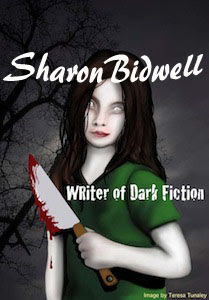Norway is a rich country in that it has low unemployment (3%) and has far more jobs available than it does population to fill them. They have many workers coming from the EU, sometimes for a few weeks or six months. Few stay. Many come for a season and then return home. They employ many Polish during strawberry-picking time. They’d never get the crops picked if they didn’t. Everything in Norway is pricey but then they earn high salaries, so what may seem expensive to outsiders isn’t so much to those living there. There is a zero tolerance for alcohol abuse, and it is very heavily taxed. Around £6-8 for a beer is not unusual.
The landscape is one of contrasts from the cities to Norway at its wildest. It’s green with many forests, snow-topped mountains, and ice-blue glaciers, deep waters, turquoise lakes, and tumbling waterfalls.
Alesund in western Norway sits on one of seven islands connected by bridges and a tunnel beneath the sea. Much of the town is new; however, it has been rebuilt in the Art Nouveau style after 850 of the wooden houses were destroyed in a blaze that began on 23rd January 1904. Alesund is a leading fishing port and commercial centre and has growing tourism owing to its fine situation boasting many local scenic fjords and mountains.
Our trip began with a drive through the picturesque countryside. Unlike Iceland, Norway has plenty of forests among deep valleys surrounded by mountainous countryside, capped with white. We stopped at Andalsnes for the famous Troll Wall — a vertical mountain face, approximately, 3,280 feet high. The rest of the trip was through Romsdalsfjord over the Orskog mountain plateau.
Most reactions to our saying we were going to take the Troll’s path were, “Hell, no!” We ascended this mountain peak with its 11 hairpin bends, stopping to admire the tumbling waterfalls, and take some snapshots from the viewing platforms at the top — after being told they were made of rusty metal. While this seemed to be stated with some pride, it hardly inspired confidence, but the photos we took were well worth the ‘risk’ and walking the 138 steps to reach there.
Somehow, a Troll ‘married couple’ managed to find their way home by smuggling themselves inside our luggage.
During the day, we stopped off at ‘the Strawberry Cottage’ and enjoyed one of the best meals we’ve ever had on a trip out in a long time. The owner is apparently very proud of her establishment and seems to have the right. A buffet of fresh prawn salad, feta salad, pasta salad, potato salad, salmon mouse, baked salmon, smoked salmon, flat bread, fresh bread, and hot: potatoes, smoked ham, pork, meatballs, and yes, even reindeer stew — probably cheap and definitely normal to the locals (numbers hunted are regulated). Dessert was nut cake, cloudberry mousse, and bowls of fresh Norwegian strawberries. We thoroughly recommend Norwegian strawberries!
Although set in typical beautiful Norwegian scenery, Olden doesn’t have much going for the tourist, but many stop here in order to visit one of the nearby glaciers. Three villages lie in the area, each with their own lake and an associated glacier. Of the local population (under 7000 — 1000 in Olden) the region’s trade mainly consists of farming, fruit growing and other types of industry, and tourism. It’s situated amidst towering mountainside in a wide valley. The closest glacier is Briksdal, although we decided to head further out and visit another — the Kjenndalen Glacier above Lovatnet Lake.
Our final destination in Norway was Stavanger…and the sun came out. In fact, after feeling comfortably ‘cool’ for so long it felt incredibly hot, although nothing like the 30+ degrees people were suffering at home. While at the port we decided to spend our time walking around town, which is a strange mixture of old and new. Behind the delightful road of old Stavanger, modern apartment blocks soar, although while exploring the pedestrian streets of old wooden buildings it’s possible to forget the rest of the town exists. There are 173 of the 18th-century wooden houses, all painted white and connected by lines of cobbled streets, retaining their old-fashioned charm even down to the lampposts. If looking for local crafts, this is a good place. There aren’t many artisans, but at least what you see is made here and far better than most items aimed at tourists, which often consists of jumpers no locals ever wear, socks, and strange knitted hats.




No comments:
Post a Comment